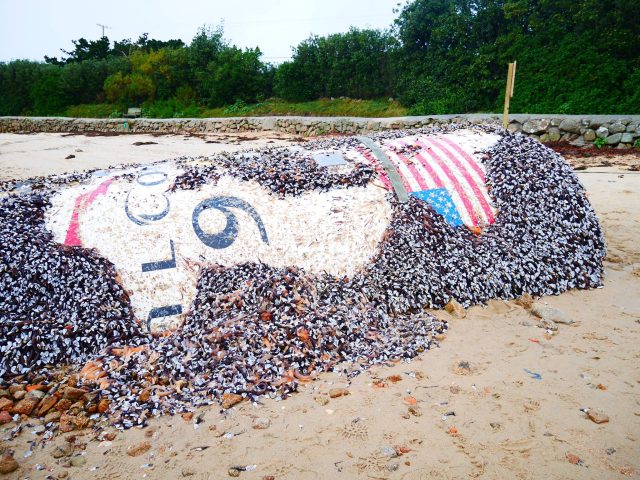
The central section of a SpaceX rocket launched in September 2014 evidently had quite a journey. The rocket’s interstage, which connects the first stage of the rocket to its second stage, blasted nearly to the edge of space before falling back to Earth and into the Atlantic Ocean. From there it swirled and ebbed, unbothered by human hands, for more than a year before Thursday.
Then along came Joseph Thomas, a boatman for Tresco Boat Services, which runs an inter-island ferry service for the islands of Tresco, Bryher, and St.Martin's. Thomas operates in the Atlantic Ocean, southwest of Cornwall, England. He first spied seabirds feeding on something quite large, which he presumed to be a dead, floating whale. As he got closer, he thought it might be part of a barnacle-covered plane. No, he later learned, it was a rocket.
But what rocket? A reddit user named /drucey began posting images of the find, and the Internet detectives did their work. They determined it wasn’t part of the SpaceX rocket that launched and then failed on July 28, 2015. (That rocket was named CRS-7 because it was SpaceX’s seventh commercial resupply mission to the International Space Station; it carried 1,800 kg of supplies and experiments.) Based upon photos of the debris as well as SpaceX rockets on the launch pad, the reddit users instead confirmed the interstage in question belonged to CRS-4, which launched successfully on September 21, 2014.
After SpaceX’s Falcon 9 rocket launches, the nine Merlin engines attached to its first stage burn for 162 seconds, bringing it to the edge of space. The interstage then facilitates the separation of the first stage from the second stage, which is powered by a single Merlin engine modified to work in the vacuum of space. The interstage would have fallen in the Atlantic Ocean, off the coast of Florida, and then drifted until found this week. "It’s pretty shocking to scrape the barnacles off and then find out it's part of a rocketship," Thomas told the BBC.
SpaceX has spent the second half of 2015 working to recover from the CRS-7 accident, and it's targeting December for its first flight since. That launch will involve the launch of a communications satellite.
reader comments
41